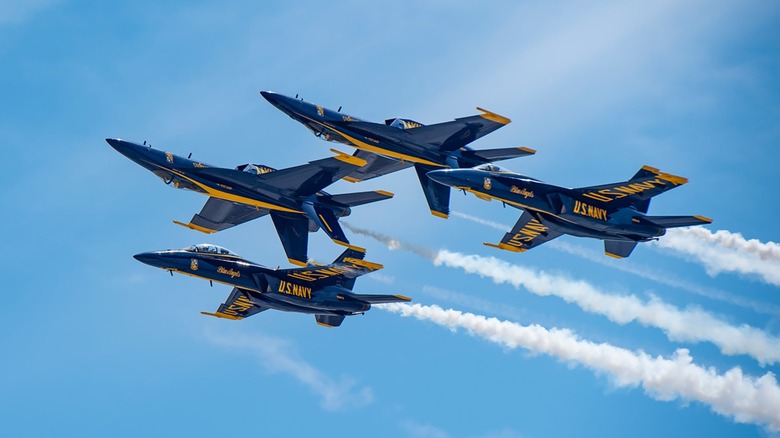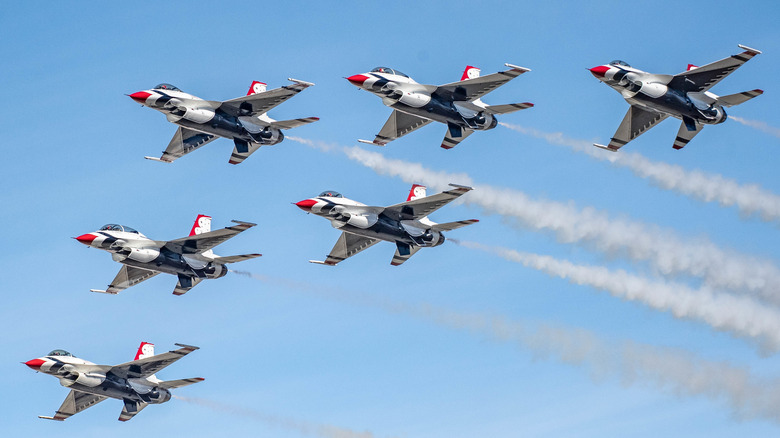Are The Blue Angels' Fighter Jets Combat-Ready?
The U.S. Navy's aerial display team, the Blue Angels, has been thrilling crowds since it was founded in 1946. The team flies the F/A-18 Super Hornet (one of Boeing's best fighters), a jet that is still in active service and is expected to remain so until the 2040s. This raises the question: Would the Blue Angels Super Hornets be ready for combat action if it ever became necessary? The short answer would be no. At least, not immediately. However, the Blue Angels' precious display jets could indeed be ready to take to the skies as part of a combat mission with a 72-hour turnaround.
There are only a few modifications required for a combat plane to become a Blue Angels jet. The most obvious is the paint job; while high-visibility paint will certainly help to keep the crowds thrilled, it probably isn't a good idea in combat. The Blue Angels jets also have the nose cannon removed, a control stick spring installed for better formation flying, and a smoke oil tank installed. Reversing these changes is relatively straightforward and reconfigures the plane for combat operations. And because Blue Angel jets are always carrier-capable, a Super Hornet can go from wowing crowds on a Friday morning to being combat-ready on an aircraft carrier deck on a Monday evening. The number of jets that the Blue Angels could bring to the table varies, but the team generally has 11 aircraft available on average.
Does the USAF have a version of the Blue Angels?
The United States Air Force (USAF) operates the Thunderbirds display team. While there are some differences between the Blue Angels and the Thunderbirds, there is one distinct similarity — they both operate a jet that is still used on the frontlines. The Thunderbirds haven't been around quite as long as the Blue Angels, having been active since 1953. They have used several aircraft since then, but the current Thunderbirds jet is the F-16 Fighting Falcon. This is a legendary fighter jet that, despite first flying in 1974, is still a major part of the USAF's fighter jet portfolio. Indeed, as of 2023, the U.S. had 936 active F-16s. That's a lot of planes, and the Thunderbirds' fleet of 12 F-16s is merely a drop in the ocean in that context. But what would happen if they were needed in combat? Would they be as quickly adaptable as the Blue Angels' F/A-18 Super Hornet?
The story is similar to the Blue Angels' jets. The Thunderbirds' F-16s can be made combat-ready in under 72 hours. The F-16s would be repainted, and the jet's original 20mm cannon would be reinstated in place of the smoke-generating system. Of course, while both the Blue Angels jets and their USAF equivalents can be readied for combat within three days, we'd like to hope that the only arenas they see are airshows, and not combat zones.

